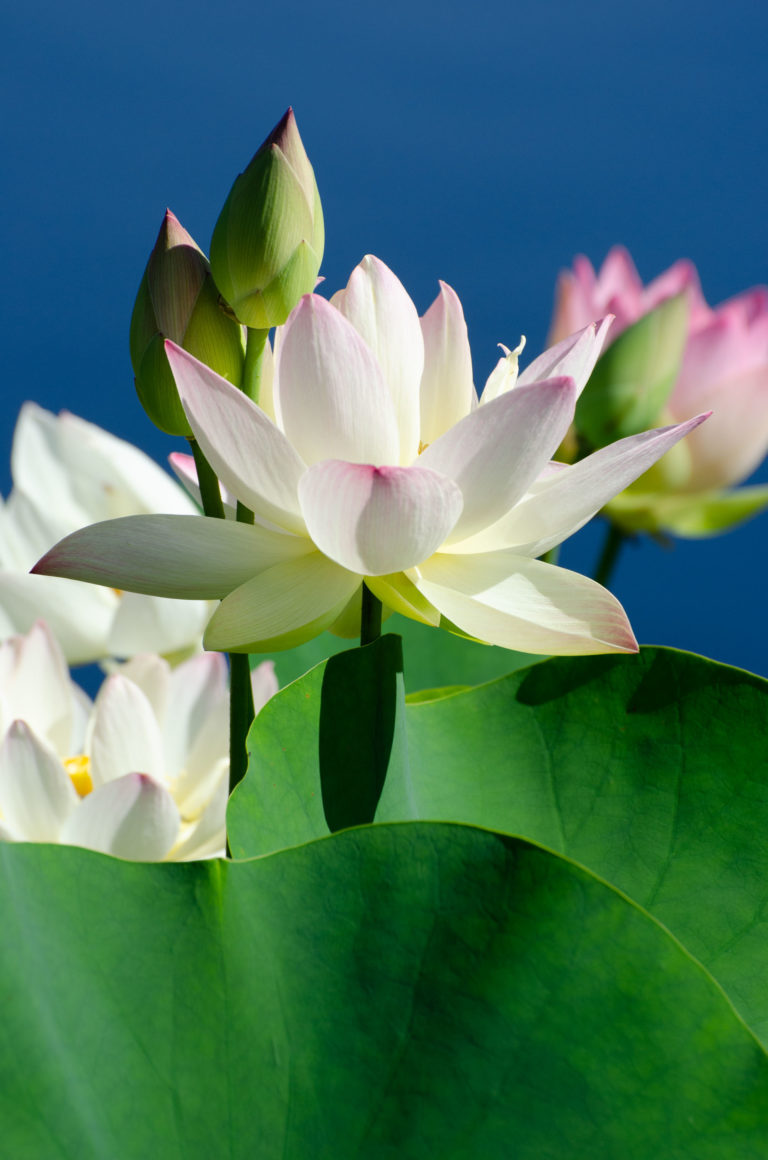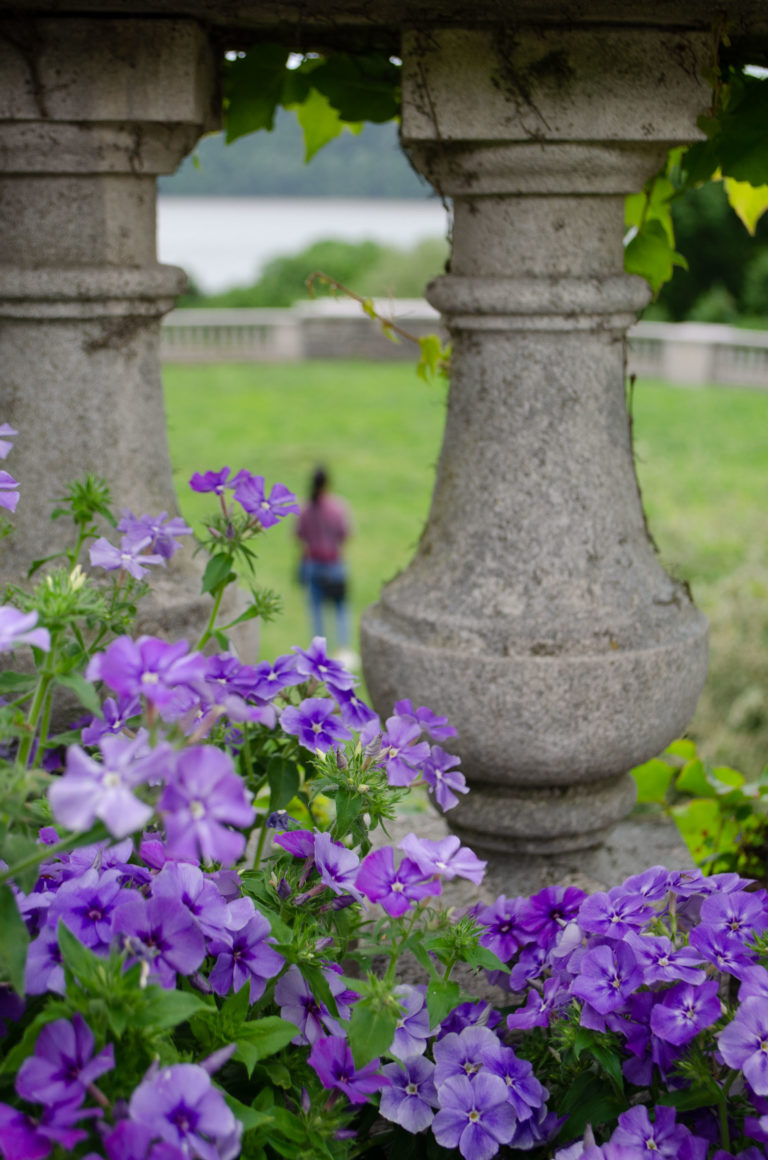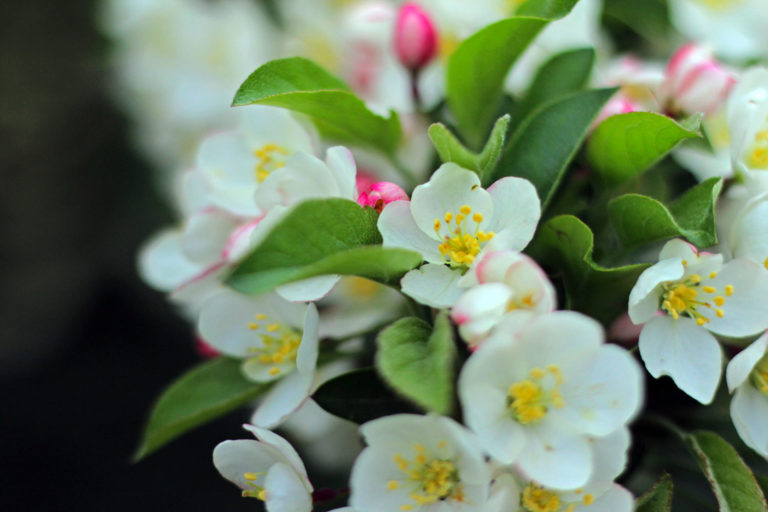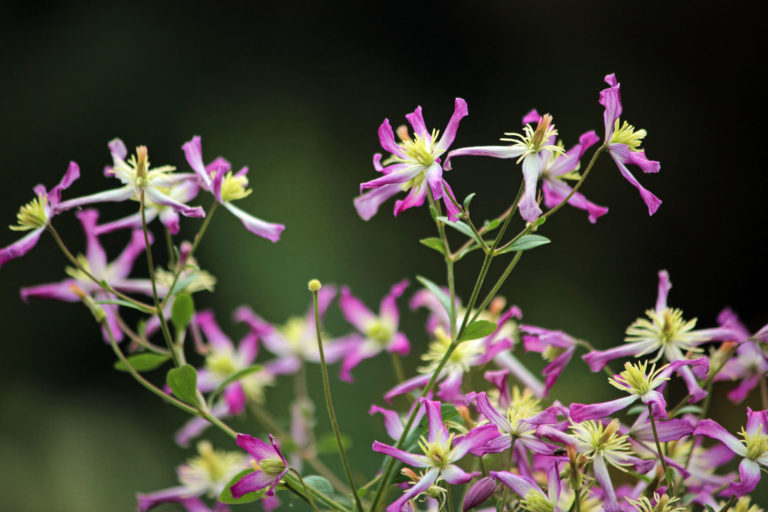
Actinidia arguta (Hardy Kiwi)
June 5, 2019Our Italianate Pergola, situated on the Great Lawn, frames the majestic views of the Hudson River and the Palisades beyond. Growing atop it is a large hardy kiwi plant (Actinidia arguta).

Its multiple, gray-barked stems match the pillars and almost seem to be part of the structure.
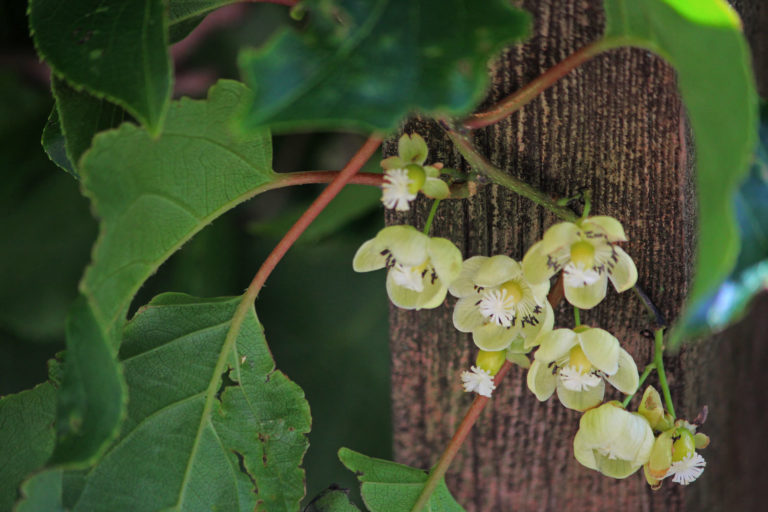
Its many branches cover much of the Pergola’s roof and, although bare in winter, they are full of handsome foliage all summer. The resulting shade is much appreciated by visitors and creates perfect conditions for the shade-loving tropical plants placed here during the warmer months.
Closely related to the familiar kiwi fruit (Actinidia deliciosa), which can only grow in more southerly locales, the hardy kiwi, as its name suggests, can thrive in colder climates. It does produce fruits—smaller versions of the type seen in stores, but equally tasty—and these develop from the flowers, which are open now.

Kiwi plants are dioecious, meaning that plants have either male or female flowers and, nearby, is a male plant of the variegated kiwi (Actinidia kolomikta). Unfortunately, this plant seems to be devoid of blooms this year and there is little chance of pollination, despite the large numbers of flowers on the female plant. The result is likely to a very sparse crop of fruits this autumn.
All the kiwi plants (Actinidia spp.) are native to temperate East Asia. The term “kiwi fruit” was coined by commercial growers in New Zealand in the 1970s. Before then, the fruit had been referred to as Chinese gooseberry, because of the similarity in taste.
By Charles Day is Wave Hill’s Ruth Rea Howell Senior Horticultural Interpreter
